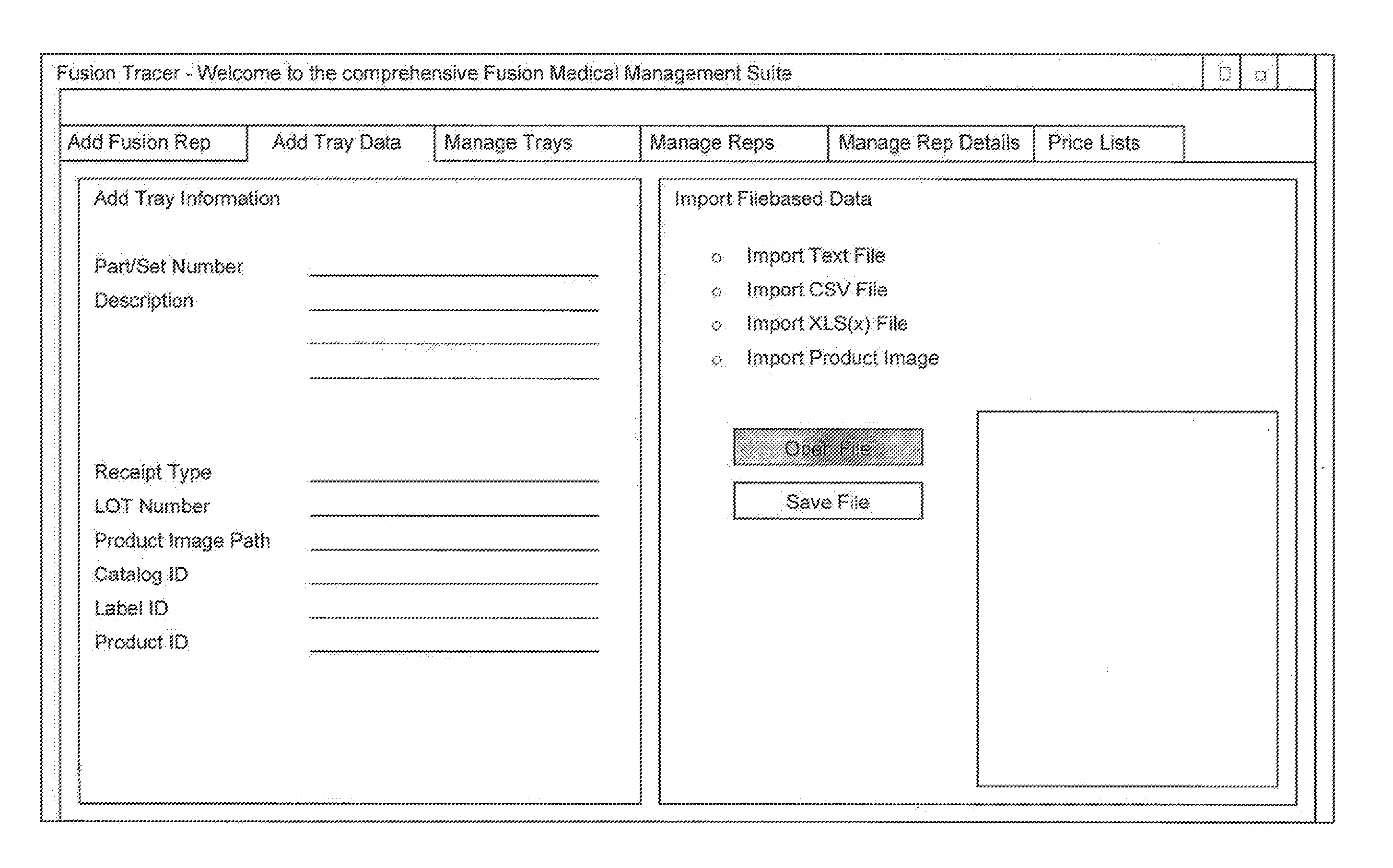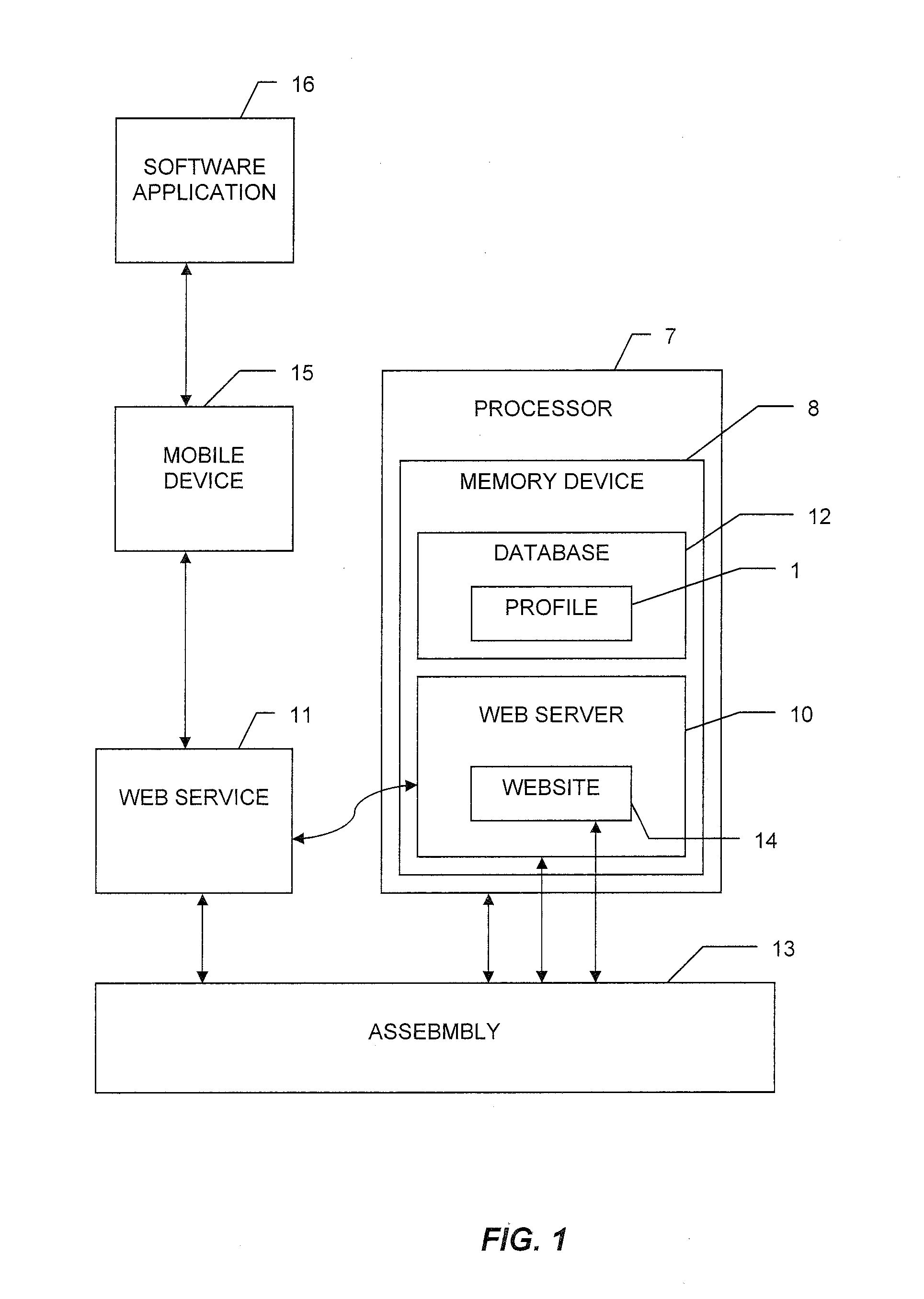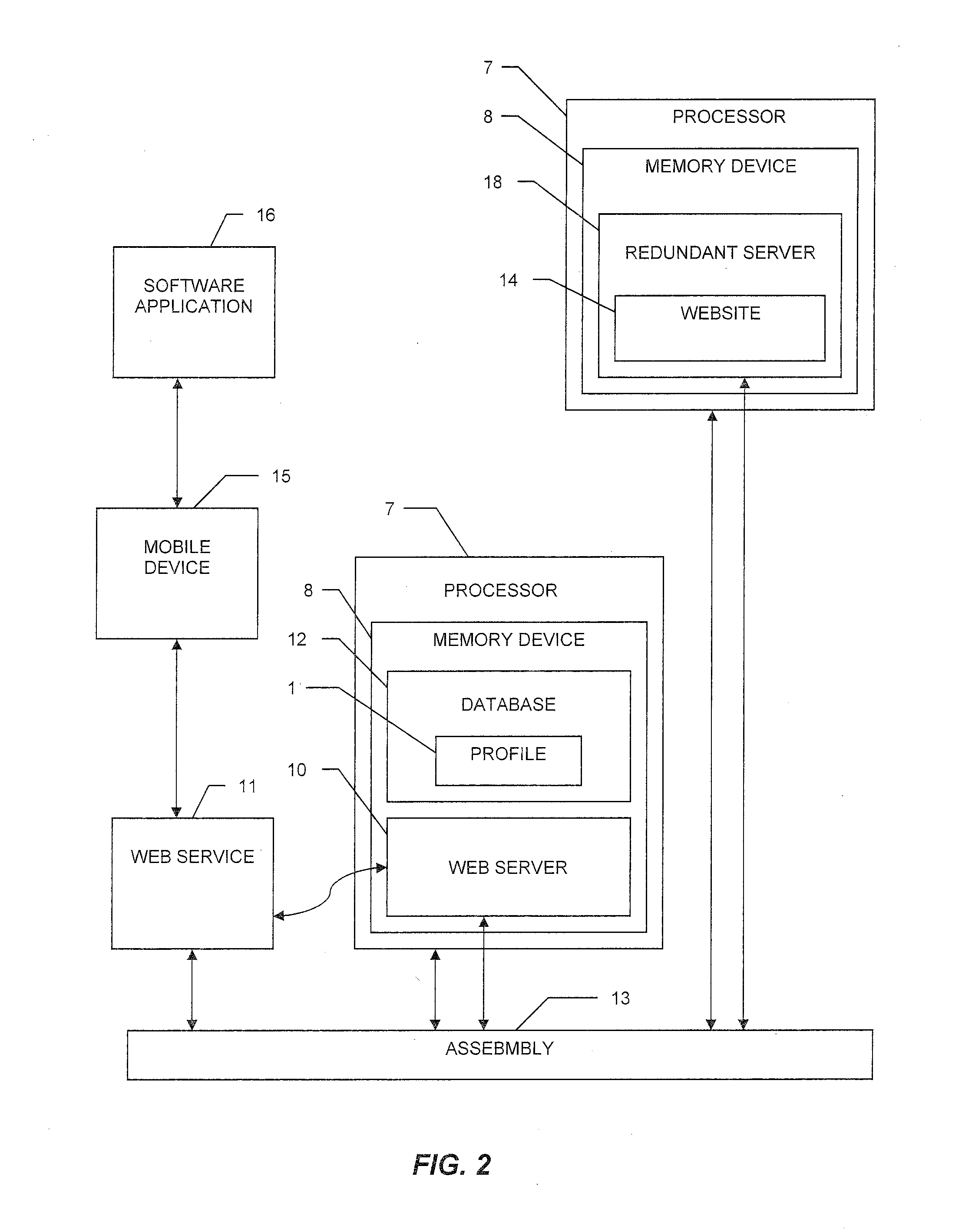System and method for tracking and managing medical device inventory
a technology for medical devices and inventory, applied in the field of logistic tracking of medical inventory, can solve the problems of limited information, lack of integrated features for tracking shipping information or data relating to inventory use, and limited smartphone applications tailored to track inventory
- Summary
- Abstract
- Description
- Claims
- Application Information
AI Technical Summary
Benefits of technology
Problems solved by technology
Method used
Image
Examples
Embodiment Construction
I. Overview.
[0039]With reference to the drawings, the invention will now be described with regard for the best mode and the preferred embodiment. In general, the invention is a system for and method of providing integrated logistics management of inventory, wherein the system is operable from a single application on a mobile telecommunication device, such as a smart phone, tablet computer, or the like. The system is capable of providing real-time tracking and logistics management of inventory throughout the lifecycle of each tracked object. The system is adaptable for use in a variety of industries, such as the medical, automotive, shipping, retail, or other industries. For the purposes of illustration, the system will be described herein in relation to logistics management of surgical implants. The embodiments disclosed herein are meant for illustration and not limitation of the invention. An ordinary practitioner will understand that it is possible to create many variations of the...
PUM
 Login to View More
Login to View More Abstract
Description
Claims
Application Information
 Login to View More
Login to View More - R&D
- Intellectual Property
- Life Sciences
- Materials
- Tech Scout
- Unparalleled Data Quality
- Higher Quality Content
- 60% Fewer Hallucinations
Browse by: Latest US Patents, China's latest patents, Technical Efficacy Thesaurus, Application Domain, Technology Topic, Popular Technical Reports.
© 2025 PatSnap. All rights reserved.Legal|Privacy policy|Modern Slavery Act Transparency Statement|Sitemap|About US| Contact US: help@patsnap.com



